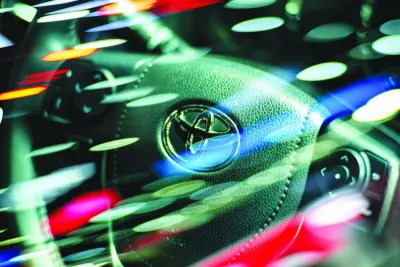Istanbul: The airline industry’s biggest focus is on sustainable aviation fuel (SAF), which will be the biggest contributor to net zero success, IATA director general Willie Walsh said here Monday.
International Air Transport Association recently unveiled a series of roadmaps aimed at providing step-by-step detailing of critical actions and dependencies for aviation to achieve net zero carbon emissions by 2050.
These roadmaps address aircraft technology, energy infrastructure, operations, finance, and policy considerations leading to net zero.
Walsh noted, ‘SAF production is less than 0.1% of what we need for net zero. But the trend is positive. In 2022, SAF production tripled to 300mn litres. And while critics of our industry dismiss that figure as irrelevant, it’s important to remember that airlines used every single drop costing almost $350mn.
“With the right supportive policies, reaching 30bn litres by 2030 is challenging but achievable. That would be about 6% of the 450bn litres annual production capacity we need in 2050. We think it will be the tipping point because achieving it will establish the trajectory needed to scale up for 2050.”
On why the airline industry was not moving faster on the issue, he said, “The willingness of airlines to use SAF is definitely not the issue. As I have said, every drop of SAF ever produced has been purchased and used. The problem is insufficient production capacity to meet demand.
“That’s why we must increase the number of pathways for SAF production and diversify feedstocks — of course while maintaining their sustainability credentials. Doing so will open production opportunities best suited to particular geographical locations.”
Governments, he said should be jumping over themselves to be first in line for the job creation, local economic stimulus, and biodiversity protection that SAF production brings — significant benefits for both developed and developing economies alike.
“Unfortunately, the politicians have not made good on their COP26 promise to stop financing fossil fuels. We have not seen a major shift of fossil fuel subsidies to green energy — certainly not for SAF.”
The US approach to SAF is the most advanced with a system of tax credits to drive up production levels. This will be more effective than purchase mandates being considered as far and wide as Singapore, India and Europe. When there is not enough supply, a purchase mandate will drive prices up, stall innovation and limit competition long before supply increases.
And if there is an early policy decision that is needed, it is to establish global standards for a SAF book and claim system that can fairly allocate SAF credits with no double counting, he noted.
Just as location makes no difference on the impact of CO2 emissions, it has no impact on where SAF is uplifted and used either. A global approach to book and claim for SAF credits will help facilitate economies of scale in SAF production.
And it will avoid the long-distance shipping (or even importation) of SAF, which would only degrade its climate credentials.
Walsh added, “It is important that we get these basics of energy transition done — production incentives, more diversified production pathways and a book and claim system. Our commitment to net zero by 2050 is fixed and firm. We have the roadmaps for an energy transition. Now we need these tools to get the job done!”

Willie Walsh, director general of the International Air Transport Association, during the IATA annual general meeting in Istanbul Monday. The airline industry’s biggest focus is on sustainable aviation fuel, which will be the biggest contributor to net zero success, Walsh said.



